#Israel and Palestine 1949 Armistice Line
Explore tagged Tumblr posts
Text
May 15 Nakba Day Amman Jordan
Nakba Day 2023 – Radio Pakistan Yesterday was the 75th anniversary of The Nakba “catastrophe,” when Palestinians experienced the “dispossession and loss of their homeland”. Amman has a large Palestinian population, and throughout the day, lamented messages echoed from mosques in the city. They were especially noticeable after dusk. I didn’t understand exactly what was being said, but the words…

View On WordPress
#Amman jordan#‘Yom Ha’atzma’ut’#British Mandate of Palestine#Gaza#Gaza Strip#Historic Palestine#Israel and Palestine 1949 Armistice Line#Israel UN Ambassador Gilad Erda#Israeli Independence Day April#Mahmoud Abbas#Mohammed Haddad#Nakba Catastrophe#Nakba Day 2023#Palestinian Arab and Jewish States#Palestinian Authority President Mahmoud Abbas#Palestinian Refugee Camps#Palestinians#Paphos Cyprus#Pre-1967 Border#Rashid Khalidi Middle East Historian and Author of The Hundred Years’ War on Palestine#Riyad Mansour Palestinian Envoy to the UN#The Arab-Israeli War of 1948#The Green Line Boundary Israel and West Bank#Ukraine UN Ambassador to Israel Yevgen Korniychuk#UN Committee on the Exercise of the Inalienable Rights of the Palestinian People (CEIRPP#West Bank#Zionist Military Forces
2 notes
·
View notes
Text
How many times did we get an offer to split the land with the Jews?
1. Peel Commission (1937): This was the first major proposal for partition by the British, recommending a division of Palestine into separate Jewish and Arab states. The plan proposed a small Jewish state in>
parts of the north and coastal areas, with the remainder of the land going to the Arabs. The Jewish leadership accepted it in principle but wanted modifications, while the Arabs outright rejected it.
2. United Nations Partition Plan (1947): Known as UN Resolution 181, this> was the most significant partition plan prior to the establishment of the State of Israel. The plan proposed the creation of independent Jewish and Arab states, with Jerusalem as an international city. The Jewish community accepted the plan, but the Arab leadership rejected it,> leading to the 1947–1948 Civil War and the subsequent Arab-Israeli War of 1948.
3. Armistice Agreements (1949): After the 1948 Arab-Israeli War, armistice agreements were signed between Israel and its neighboring Arab states, but these did not constitute a formal partition plan>
Instead, they established ceasefire lines, known as the Green Line, without official recognition of borders.
4. Rogers Plan (1969): Proposed by U.S. Secretary of State William P. Rogers, the Rogers Plan aimed at resolving the Israeli-Arab conflict after the 1967 Six-Day War.>
The plan called for Israeli withdrawal from territories occupied in the war (including the West Bank, Gaza, and East Jerusalem) in exchange for peace and recognition by Arab states.
Impact: The plan was rejected by both Israel and the Arab states, as Israel was unwilling to>
the pre-1967 borders, and the Arab states refused to recognize Israel or negotiate at that time.
5. Camp David Accords (1978): The Camp David Accords were brokered by U.S. President Jimmy Carter between Egyptian President Anwar Sadat and Israeli Prime Minister Menachem Begin.>
Two frameworks were agreed upon: A. Framework for Peace in the Middle East B. Egypt-Israel Peace Treaty (1979) Impact: The accords improved relations between Israel and Egypt but did not resolve the broader Israeli-Palestinian conflict, nor did they lead to immediate Palestinian> autonomy.
6. Madrid Conference (1991): After the Gulf War, the U.S. and the Soviet Union co-sponsored the Madrid Peace Conference, bringing Israel and Arab states (including Palestinian representatives) to the negotiating table for the first time.
Impact: The conference> initiated direct, face-to-face negotiations but did not result in a final agreement. However, it paved the way for later agreements, including the Oslo Accords.
7. Oslo Accords (1993-1995): The Oslo Accords were the first direct agreement between Israel and the Palestine>
Liberation Organization (PLO). The accords outlined a framework for Palestinian self-governance in parts of the West Bank and Gaza and a five-year timeline for further negotiations on issues like borders, refugees, and Jerusalem. Impact: The Oslo Accords led to the establishment>
of the Palestinian Authority and the division of the West Bank into Areas A, B, and C, each with varying levels of Palestinian and Israeli control. However, final status issues were left unresolved, and subsequent violence, including the Second Intifada (2000-2005), disrupted> the peace process.
8. Camp David Summit (2000): U.S. President Bill Clinton hosted Israeli Prime Minister Ehud Barak and Palestinian leader Yasser Arafat at Camp David to negotiate a final status agreement. Barak offered a two-state solution, proposing that Israel would>
withdraw from most of the West Bank and Gaza, while retaining some settlement blocs and offering a shared Jerusalem. Arafat rejected the offer.
Impact: The failure of the summit, combined with the outbreak of the Second Intifada, led to a collapse in the peace process.>
9. Taba Summit (2001): Following the Camp David failure, Israeli and Palestinian negotiators met in Taba, Egypt, to try to salvage the peace process. The talks made significant progress, with Israel offering a near-complete withdrawal from the West Bank and Gaza and compromises>
on Jerusalem. However, the negotiations were interrupted by Israeli elections and the Second Intifada.
Impact: While progress was made, the talks ended without a final agreement, and violence escalated soon after.>
10. Annapolis Conference (2007): The Annapolis Conference, held in November 2007 in Annapolis, Maryland, was a peace summit aimed at resolving the Israeli-Palestinian conflict and promoting the two-state solution. It was initiated by U.S. President George W. Bush and attended by>
Israeli Prime Minister Ehud Olmert, Palestinian Authority President Mahmoud Abbas, and representatives from several other nations. The conference sought to revive peace negotiations based on previous agreements, with the goal of establishing an independent Palestinian state>
alongside Israel. During the negotiations, Olmert made a far-reaching peace proposal to Abbas, offering a near-total Israeli withdrawal from the West Bank, a territorial link to Gaza, and international control of Jerusalem's Old City. Abbas, however, rejected the offer.>
11. Trump Administration Peace Plan ("Deal of the Century") (2020): The Trump administration proposed a peace plan in January 2020, which envisioned a two-state solution, with Israel retaining large portions of the West Bank, including settlement blocs, while offering the>
Palestinians limited autonomy over a non-contiguous state. Jerusalem would remain Israel's capital, and the Palestinians would receive some compensation for land losses.
Impact: The plan was welcomed by Israel but rejected outright by the Palestinian leadership.
Ahmed Al-Khalidi
32 notes
·
View notes
Note
Hey I keep seeing that Israel offered peace/has been offering peace… today I’ve also seen,
“Israel has voted NO on 364 peace settlements w/ Palestine in the UN general assembly since 1947”
Is it just that Israel wants peace on its own terms?
A quick search for that yielded only an undetailed Twitter post. So you should do some follow-up digging on your own. Exactly what were in these "peace settlements" which Israel allegedly voted against? There have definitely been many, many U.N. initiatives that called for full withdrawal to the 1949 armistice lines ("pre-1967 borders"), when the armistice spelled out explicitly in international law that these are not borders and that borders can only be set by direct negotiations. I'm sure there have also been motions for an unspecified - or unlimited - "Palestinian right of return." These are non-starters and would not bring peace.
The U.N. is just Congress with less democracy and more racism. At least stupid racists get into Congress by winning an election. People far more stupid and racist get a U.N. delegate seat because their aunt fucked a warlord. The entire strategy of U.N.-ifying and internationalizing this dispute is a waste of time, pointlessly dragging in the distractions and biases of foreign nations that have long since exterminated their Jews. There should be direct, 1:1 negotiations between Israel and the Palestinian Authority.
48 notes
·
View notes
Text
We are Israel's largest human rights group [B’Tselem] – and we are calling this apartheid by Hagai El-Ad
One cannot live a single day in Israel-Palestine without the sense that this place is constantly being engineered to privilege one people, and one people only: the Jewish people. Yet half of those living between the Jordan River and the Mediterranean Sea are Palestinian. The chasm between these lived realities fills the air, bleeds, is everywhere on this land.
I am not simply referring to official statements spelling this out – and there are plenty, such as prime minister Benjamin Netanyahu’s assertion in 2019 that “Israel is not a state of all its citizens”, or the “nation state” basic law enshrining “the development of Jewish settlement as a national value”. What I am trying to get at is a deeper sense of people as desirable or undesirable, and an understanding about my country that I have been gradually exposed to since the day I was born in Haifa. Now, it is a realisation that can no longer be avoided.
Although there is demographic parity between the two peoples living here, life is managed so that only one half enjoy the vast majority of political power, land resources, rights, freedoms and protections. It is quite a feat to maintain such disfranchisement. Even more so, to successfully market it as a democracy (inside the “green line” – the 1949 armistice line), one to which a temporary occupation is attached. In fact, one government rules everyone and everything between the river and the sea, following the same organising principle everywhere under its control, working to advance and perpetuate the supremacy of one group of people – Jews – over another – Palestinians. This is apartheid.
There is not a single square inch in the territory Israel controls where a Palestinian and a Jew are equal. The only first-class people here are Jewish citizens such as myself, and we enjoy this status both inside the 1967 lines and beyond them, in the West Bank. Separated by the different personal statuses allotted to them, and by the many variations of inferiority Israel subjects them to, Palestinians living under Israel’s rule are united by all being unequal.
Unlike South African apartheid, the application of our version of it – apartheid 2.0, if you will – avoids certain kinds of ugliness. You won’t find “whites only” signs on benches. Here, “protecting the Jewish character” of a community – or of the state itself – is one of the thinly veiled euphemisms deployed to try to obscure the truth. Yet the essence is the same. That Israel’s definitions do not depend on skin colour make no material difference: it is the supremacist reality which is the heart of the matter – and which must be defeated.
Until the passage of the nation state law, the key lesson Israel seemed to have learned from how South Africa’s apartheid ended was to avoid too-explicit statements and laws. These can risk bringing about moral judgments – and eventually, heaven forbid, real consequences. Instead, the patient, quiet, and gradual accumulation of discriminatory practices tends to prevent repercussions from the international community, especially if one is willing to provide lip service to its norms and expectations.
This is how Jewish supremacy on both sides of the green line is accomplished and applied.
We demographically engineer the composition of the population by working to increase the number of Jews and limit the number of Palestinians. We allow for Jewish migration – with automatic citizenship – to anywhere Israel controls. For Palestinians, the opposite is true: they cannot acquire personal status anywhere Israel controls – even if their family is from here.
We engineer power through the allocation – or denial – of political rights. All Jewish citizens get to vote (and all Jews can become citizens), but less than a quarter of the Palestinians under Israel’s rule have citizenship and can thus vote. On 23 March, when Israelis go and vote for the fourth time in two years, it will not be a “celebration of democracy” – as elections are often referred to. Rather, it will be yet another day in which disfranchised Palestinians watch as their future is determined by others.
We engineer land control by expropriating huge swaths of Palestinian land, keeping it off-limits for their development – or using it to build Jewish towns, neighbourhoods, and settlements. Inside the green line, we have been doing this since the state was established in 1948. In East Jerusalem and the West Bank, we have been doing this since the occupation began in 1967. The result is that Palestinian communities – anywhere between the river and the sea – face a reality of demolitions, displacement, impoverishment and overcrowding, while the same land resources are allocated for new Jewish development.
And we engineer – or rather, restrict – Palestinians’ movement. The majority, who are neither citizens nor residents, depend on Israeli permits and checkpoints to travel in and between one area and another, as well as to travel internationally. For the two million in the Gaza Strip travel restrictions are the most severe – this is not just a Bantustan, as Israel has made it one of the largest open-air prisons on Earth.
Haifa, my birth city, was a binational reality of demographic parity until 1948. Of some 70,000 Palestinians living in Haifa before the Nakba, less than a 10th were left afterwards. Almost 73 years have passed since then, and now Israel-Palestine is a binational reality of demographic parity. I was born here. I want – I intend – to stay. But I want – I demand – to live in a very different future.
The past is one of traumas and injustices. In the present, yet more injustices are constantly reproduced. The future must be radically different – a rejection of supremacy, built on a commitment to justice and our shared humanity. Calling things by their proper name – apartheid – is not a moment of despair: rather, it is a moment of moral clarity, a step on a long walk inspired by hope. See the reality for what it is, name it without flinching – and help bring about the realisation of a just future.
#reaux speaks#resources#B’Tselem#israel#human rights#apartheid#south africa#palestine#the guardian#article#gaza#jewish#palestinian#anti zionism#zionism#free palestine
52 notes
·
View notes
Text
by David Solway
Despite all the pitfalls on the long journey to statehood, on May 11, 1949, the UN General Assembly, by the requisite two-thirds majority, approved the application to admit Israel to the UN by General Assembly Resolution 273. We should consider, too, aside from the legal documentation we are examining here, that Israel is replete with stories, memorial scriptures and artifacts from pre-Biblical times and possesses a calendar that dates to 5783. Israel’s existence is not only official but immemorial.
Following Israel’s victory in the Six-Day War and its acquisition of territory, anti-Zionists demanded that Israel return to its shrunken 1967 borders, proclaiming their opposition to “the immoral and impractical policies that deny Palestinians equal rights,” calling for an end to “the siege on Gaza” and for “a permanent ceasefire,” and putting the onus on Israel to comply. Jimmy Carter’s mendacious book "Palestine: Peace Not Apartheid" is worth examining in some detail. Among the weave of falsehoods that bind its pages, we find that UN Resolution 242 demands that Israel return to Palestinians all land captured in the 1967 war.
This is utter fiction. Carter and his ideological descendants have probably never heard of or paid much attention to Eugene Rostow, former U.S. Undersecretary of State for Political Affairs and one of the leading architects of UN Resolution 242. Rostow explained in The New Republic for Oct. 21, 1991, that the Resolution allows Israel to administer its conquered territories until a just and lasting peace in the Middle East is achieved and that “the Jews have the same right to settle there as they have to settle in Haifa.”
Further, no Palestinian leader and few Western pundits have acknowledged the raw fact that there are no 1967 borders to which Israel is required to return. In fact, there are only armistice lines that have no bearing on future negotiations to determine final borders. The late Hugh Foot, Lord Caradon, formerly Britain’s ambassador to the United Nations and, along with Rostow, one of the drafters of Resolution 242, stated in the Beirut Daily Star on June 12, 1974, that “It would have been wrong to demand that Israel return to its positions of June 4, 1967, because those positions were undesirable and artificial.”
Lord Caradon’s account of the meaning and history of the Resolution is supported by the remaining two framers, Arthur Goldberg and Baron George-Brown, who are equally explicit in asserting its original intention. Resolution 242 is a pro-Israel and not, as constantly misreported, a pro-Palestinian article. Yet in the interests of peace, Israel has fruitlessly surrendered much of its war gains in Gaza and the West Bank, creating unnecessary misery for itself.
It follows that Israel’s enemies, and antisemites in general, are either credulous or savage or both. Generally speaking, their leaders are political operators with gelatinous souls, concerned mainly for their personal safety and privilege and cathected on the Islamic voting bloc. Moreover, far too many ordinary citizens are unable to distinguish between a forgery (e.g., "The Protocols of the Elders of Zion") and a scrupulous work of historical documentation (e.g., the aforementioned "From Time Immemorial"). They are culpably deaf and blind, as Richard Ibrahim indicates, to the purport of an ISIS audio recording titled And Kill Them Wherever You Find Them (Koran 9:5) that pronounces the jihadist worldview of Islam: “The battle with the Jews is a religious one and not a national or populist one! It is not a battle for land, soil, or borders! In fact, it is a war that is legitimized by the Book and the Sunnah.”
28 notes
·
View notes
Text
Early on Saturday morning, the Palestinian militant group Hamas launched an unprecedented multipronged attack on Israel that caught intelligence officials the world over by surprise. Israel swiftly declared war and began retaliating against the Gaza Strip, which is controlled internally by Hamas but has been under an Israeli military blockade since 2007. So far, hundreds of Israeli and Palestinian soldiers and civilians have died in fighting that shows no sign of abating—and could yet expand to new fronts.
At its core, the Israeli-Palestinian conflict is a dispute over land—specifically, who has the right to live in the territory between the Jordan River and the Mediterranean Sea, and under what conditions they can do so. Within this area, the question of where Israel starts and Palestine ends is a complicated one that has changed over time. It also depends on whom you ask.
Though Israel has never delineated all of its official boundaries, most of the international community recognizes the 1949 armistice lines between Israel and its Arab neighbors, which for the first time divided Jerusalem into eastern and western sectors and created the West Bank and Gaza as geopolitical entities. Together, the latter two areas are referred to as the “Palestinian territories,” even if Palestinians have never had full control over how they are run.
It’s the enclave in the south, the Gaza Strip, that is at the center of the latest outbreak of violence—and which is now the target of an Israeli military onslaught.
How did these territories come about?
In the early 20th century, Jewish immigration to the British mandate for Palestine, a slice of land between the Jordan River and the Mediterranean Sea, accelerated. Arrivals were driven by rising antisemitism in Europe and a rising Jewish national movement known as Zionism. In 1947, amid growing tensions between Palestinians and Zionist militias and in the immediate aftermath of the Holocaust, the brand-new United Nations voted to divide Palestine into separate Jewish and Arab states; the contested city of Jerusalem would be under international control.
Most Jewish groups supported the plan, while Arab groups and the governments of Arab states rejected it. Violent confrontations between the two sides intensified, and the U.N. blueprint as envisaged was never implemented.
In May 1948, after Britain dissolved the mandate, Zionist leaders declared Israel an independent state. A group of Arab countries including Egypt, Iraq, Syria, and what was then called Transjordan invaded, triggering the first Arab-Israeli War. As Israeli forces seized territory, thousands of Palestinians were forced to flee their homes and became refugees in what is referred to as the “Nakba,” or catastrophe.
The Jordanians occupied and annexed East Jerusalem as well as a block of territory to its east, while Egypt occupied a seaside sliver of land north of the Sinai Peninsula about twice the size of Washington, D.C., that included the town of Gaza. Many Palestinian refugees fled to the Egyptian- and Jordanian-occupied areas. Jordan’s territory would become known as the “West Bank” (of the Jordan River), while Egypt’s has since been called the “Gaza Strip.” Israel and its Arab foes reached armistice agreements the following year.
How did Israel take control of the Palestinian territories?
In 1967, during the Six-Day War, Israel launched preemptive attacks against Egypt and Jordan and managed to take East Jerusalem, the West Bank, and the Gaza Strip, as well as the Sinai Peninsula. Though Israel incrementally returned Sinai to Egypt starting in 1979 as part of peace negotiations, it has occupied the other territories ever since.
Israel formally annexed East Jerusalem in 1980 but has held off making the same official designation in the West Bank and Gaza. Instead, it steadily built up a vast settlement enterprise in both territories—considered illegal by most of the international community—while maintaining officially that their final status would be determined in future negotiations. Israel withdrew from its settlements in Gaza during a contested disengagement campaign in 2005 but has expanded them dramatically in the West Bank.
In a brief optimistic period following the signing of the Oslo Accords in the mid-1990s, it seemed as though portions of the West Bank and Gaza might one day merge to become an independent Palestinian state. However, the implementation of the accords quickly unraveled as the region became roiled by political violence following the assassination of Israeli Prime Minister Yitzhak Rabin by a right-wing Israeli extremist as well as the Second Intifada, or uprising.
How is the West Bank governed today?
A follow-up treaty to the first Oslo Accord established the Palestinian Authority (PA), a quasi-government in the Palestinian territories that experts agree has little actual power and acts mostly as a security subcontractor to Israel. The PA—led by unpopular President Mahmoud Abbas—officially manages only 18 percent of the West Bank, known as Area A, though Israeli forces can still enter the PA’s area at will. The PA has administrative control of another 22 percent—Area B—where the Israeli military has security control. The overwhelming majority of the West Bank (60 percent, known as Area C) is blocked off for Israeli settlements and is under Israeli control. Many leading human rights organizations have concluded that the conditions faced by West Bank Palestinians are tantamount to apartheid. Others have argued that the territory is already de facto annexed.
What about Gaza?
Initially, the PA governed both the West Bank and Gaza. But the PA lost control over Gaza after elections in 2006, in which the Islamist Hamas party defeated Fatah, the long-dominant political party of Yasser Arafat that Abbas now leads. Unlike the secular Fatah, which recognizes Israel, Hamas—founded in Gaza in 1987 during the First Intifada—rejects what it calls the “Zionist entity.”
Hamas’s 2006 election victory plunged the PA into crisis and led to a civil war between Fatah and Hamas, with Hamas taking over Gaza in a 2007 battle. Israel, with Egyptian support, immediately responded with a land, air, and sea blockade that has been decried by human rights organizations as a form of “collective punishment.” Sixteen years later, Gaza is regularly referred to as an “open-air prison.” The U.N. considers Israel’s occupation in the enclave ongoing, despite the 2005 disengagement, though Israel disputes this.
Gaza is home to 2.3 million people and is one of the most densely populated places on Earth. From their respective border crossings, Israel and Egypt decide who and what can enter and exit the territory, including humanitarian support. Israel also controls the strip’s electricity supply and can turn it off at will. The blockade has decimated Gaza’s economy—and Gazans’ quality of life. Gaza today is deeply impoverished: Eighty percent of Gazans rely on aid to survive, and, even before this week’s full siege, 95 percent did not have access to clean drinking water. Around half do not have enough to eat. Many are unable to obtain proper medical care due to a notoriously restrictive Israeli permitting system.
The undemocratic PA has not held national elections since 2006 in part because Abbas and his international benefactors—in particular Israel and the United States—fear what may happen in the West Bank if Hamas wins again.
Why has Gaza become such a hot spot?
Unlike Fatah, Hamas’s raison d’être is to fight Israel—and the feeling has become mutual. Since Israel’s blockade began in 2007, Israel has conducted four large-scale military assaults on Gaza, not including its ongoing operation. Hamas regularly launches rockets into Israel, and Israel retaliates in kind. Past fighting has disproportionately led to Palestinian casualties. In 2019, the International Criminal Court announced an investigation into both Hamas and Israel for alleged war crimes.
Hamas’s latest attack on Israel is unparalleled; at the time of writing, the death toll was over 1,000 Israelis, mostly civilians. In response, Israel launched ongoing retaliatory airstrikes that it said targeted Hamas sites. Palestinian officials, however, have said that these have so far also hit civilian infrastructure. So far, 849 Palestinians are estimated to have been killed. Those casualty numbers are only expected to rise, particularly in Gaza: Israeli Defense Minister Yoav Gallant ordered a total ban on food, water, fuel, and medicine entering the already-besieged territory. Netanyahu is reportedly planning a ground invasion.
16 notes
·
View notes
Text
"ISRAEL AND PALESTINE WAR"
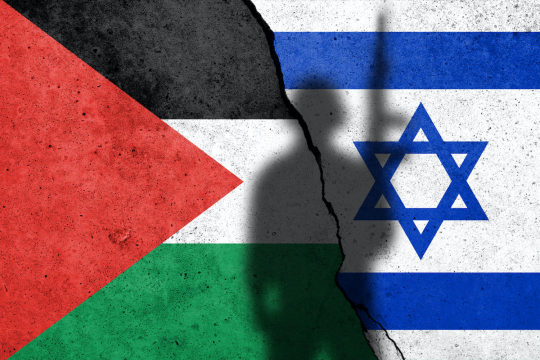
RELIGION
-Several religious factors pertinent to Islam and Judaism dictate the role of religion as the main factor in the conflict, notably including the sanctity of holy sites and the apocalyptic narratives of both religions, which are detrimental to any potential for lasting peace between the two sides. Extreme religious Zionists in Israel increasingly see themselves as guardians and definers of the how the Jewish state should be, and are very stringent when it comes to any concessions to the Arabs. On the other hand, Islamist groups in Palestine and elsewhere in the Islamic world advocate the necessity of liberating the “holy” territories and sites for religious reasons, and preach violence and hatred against Israel and the Jewish people.
Religion-based rumors propagated by extremists in the media and social media about the hidden religious agendas of the other side exacerbate these tensions. Examples include rumors about a “Jewish Plan” to destroy al Aqsa mosque and build the Jewish third temple on its remnants, and, on the other side rumors that Muslims hold the annihilation of Jews at the core of their belief.
In addition, worsening socio-economic conditions in the Arab and Islamic world contribute to the growth of religious radicalism, pushing a larger percentage of youth towards fanaticism, and religion-inspired politics.
The advent of the Arab spring, ironically, also posed a threat to Arab-Israeli peace, as previously stable regimes were often challenged by extreme political views. A prominent example was the Muslim Brotherhood in Egypt, who after succeeding to the presidency in 2012, threatened to compromise the peace agreement with Israel based on their religious ideology – even if they did not immediately tear up the treaty.
BORDER
-The modern borders of Israel exist as the result both of past wars and of diplomatic agreements between the State of Israel and its neighbours, as well as an effect of the agreements among colonial powers ruling in the region before Israel's creation. Only two of Israel's five total potential land borders are internationally recognized and uncontested, while the other three remain disputed; the majority of its border disputes are rooted in territorial changes that came about as a result of the 1967 Arab–Israeli War, which saw Israel occupy large swathes of territory from its rivals.[1] Israel's two formally recognized and confirmed borders exist with Egypt and Jordan since the 1979 Egypt–Israel peace treaty and the 1994 Israel–Jordan peace treaty, while its borders with Syria (via the Israeli-occupied Golan Heights), Lebanon (via the Blue Line; see Shebaa Farms dispute) and the Palestinian territories (Israeli-occupied land largely recognized as part of the de jure State of Palestine) remain internationally defined as contested.[2]
According to the Green Line agreed upon in the 1949 Armistice Agreements, Israel is demarcated by Lebanon to the north, the Golan Heights under Syrian sovereignty as well as the rest of Syria to the northeast, the Palestinian West Bank and Jordan to the east, and by the Palestinian Gaza Strip and Egypt to the southwest. The Israeli border with Egypt is the international border demarcated in 1906 between the United Kingdom and the Ottoman Empire, and confirmed in the 1979 Egypt–Israel peace treaty; the Israeli border with Jordan is based on the border defined in the 1922 Trans-Jordan memorandum, and confirmed in the 1994 Israel–Jordan peace treaty.
TERRITORY
-The Palestinian territories are the two regions of the former British Mandate for Palestine that have been militarily occupied by Israel since the Six-Day War of 1967, namely: the West Bank (including East Jerusalem) and the Gaza Strip. The International Court of Justice (ICJ) has referred to the West Bank, including East Jerusalem, as "the Occupied Palestinian Territory", and this term was used as the legal definition by the ICJ in its advisory opinion of July 2004.[7][8] The term occupied Palestinian territory was used by the United Nations and other international organizations between October 1999[9] and December 2012 to refer to areas controlled by the Palestinian National Authority, but from 2012, when Palestine was admitted as one of its non-member observer states, the United Nations started using exclusively the name State of Palestine.[10][11][12][13] The European Union (EU) also adopts the term occupied Palestinian territory,[14][15] with a parallel term Palestinian Authority territories[16][17][18] also occasionally used. The government of Israel and its supporters use the label "disputed territories" instead.[19]
RESOURCES
Israel
-The natural resources of Israel include potash, copper ore, natural gas, phosphate rock, magnesium bromide, clays and sand. Additionally, cut diamonds are one of the leading exports of the country, which otherwise is primarily dependent on crude oil and raw material imports. The discovery of natural gas fields located near the coast of Israel have successfully transformed the nation’s energy prospect in a big way. In fact, it is estimated that approximately 2.4 trillion cubic feet of natural gas is present within the Karish and Tanin gas deposits, which were originally discovered in 2009 and 2010, respectively2.
Palestine
-Historic Palestine has long had an abundance of natural resources, ranging from fresh and ground water, arable land and, more recently, oil and natural gas. In the seven decades since the establishment of the state of Israel, these resources have been compromised and exploited through a variety of measures. These include widespread Palestinian dispossession of land in the ongoing Nakba, exploitation of water through failed negotiations, and a finders-keepers approach to gas and oil found in our under occupied land.
ORIGIN OF THE PEOPLE
Israel
-The people of Israel (also called the "Jewish People") trace their origin to Abraham, who established the belief that there is only one God, the creator of the universe (see Torah). Abraham, his son Yitshak (Isaac), and grandson Jacob (Israel) are referred to as the patriarchs of the Israelites. All three patriarchs lived in the Land of Canaan, which later became known as the Land of Israel. They and their wives are buried in the Ma'arat HaMachpela, the Tomb of the Patriarchs, in Hebron (Genesis Chapter 23).
The name Israel derives from the name given to Jacob (Genesis 32:29). His 12 sons were the kernels of 12 tribes that later developed into the Jewish nation. The name Jew derives from Yehuda (Judah), one of the 12 sons of Jacob (Reuben, Shimon, Levi, Yehuda, Dan, Naphtali, Gad, Asher, Yisachar, Zevulun, Yosef, Binyamin)(Exodus 1:1). So, the names Israel, Israeli or Jewish refer to people of the same origin.
Palestine
- The genetic profile of Palestinians has, for the first time, been studied by using human leukocyte antigen (HLA) gene variability and haplotypes. The comparison with other Mediterranean populations by using neighbor-joining dendrograms and correspondence analyses reveal that Palestinians are genetically very close to Jews and other Middle East populations, including Turks (Anatolians), Lebanese, Egyptians, Armenians, and Iranians. Archaeologic and genetic data support that both Jews and Palestinians came from the ancient Canaanites, who extensively mixed with Egyptians, Mesopotamian, and Anatolian peoples in ancient times. Thus, Palestinian-Jewish rivalry is based in cultural and religious, but not in genetic, differences. The relatively close relatedness of both Jews and Palestinians to western Mediterranean populations reflects the continuous circum-Mediterranean cultural and gene flow that have occurred in prehistoric and historic times. This flow overtly contradicts the demic diffusion model of western Mediterranean populations substitution by agriculturalists coming from the Middle East in the Mesolithic-Neolithic transition.
NOVA MUSIC FESTIVAL
-The rockets began around 6:30 a.m., Tal Gibly told CNN. Thirty minutes later, she and hundreds of others attending an Israeli music festival were running as Gaza militants fired at them.
The Nova Festival in a rural farmland area near the Gaza-Israel border was just one of multiple locations hit on Saturday morning by the most sustained and coordinated assault inside Israel ever carried out by Hamas militants.
At least 260 bodies would later be found at the festival site, according to Israeli rescue service Zaka. Some attendees were taken hostage, seen in social media videos being seized by their armed captors.
ARE YOU A PRO ISRAEL OR PRO PALESTINE?
-I’m a pro-Israel, because in the first place based on the history and on the bible, Jesus gave the land to Israel. And now the war between the two county is still continuing. Palestine started the war because they were the first one attacked Israel and until now the war between them is not yet ending.
2 notes
·
View notes
Text
It's all about Israel vs Palestine war.
Before we proceed to our topic, let's first define how it all started. how the war started from israel and palestine.
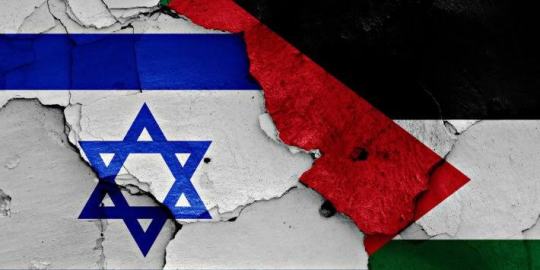
"The Conflict of Religion"
Several religious factors pertinent to Islam and Judaism dictate the role of religion as the main factor in the conflict, notably including the sanctity of holy sites and the apocalyptic narratives of both religions, which are detrimental to any potential for lasting peace between the two sides. Extreme religious Zionists in Israel increasingly see themselves as guardians and definers of the how the Jewish state should be, and are very stringent when it comes to any concessions to the Arabs. On the other hand, Islamist groups in Palestine and elsewhere in the Islamic world advocate the necessity of liberating the “holy” territories and sites for religious reasons, and preach violence and hatred against Israel and the Jewish people.
Religion-based rumors propagated by extremists in the media and social media about the hidden religious agendas of the other side exacerbate these tensions. Examples include rumors about a “Jewish Plan” to destroy al Aqsa mosque and build the Jewish third temple on its remnants, and, on the other side rumors that Muslims hold the annihilation of Jews at the core of their belief.
In addition, worsening socio-economic conditions in the Arab and Islamic world contribute to the growth of religious radicalism, pushing a larger percentage of youth towards fanaticism, and religion-inspired politics.
The advent of the Arab spring, ironically, also posed a threat to Arab-Israeli peace, as previously stable regimes were often challenged by extreme political views. A prominent example was the Muslim Brotherhood in Egypt, who after succeeding to the presidency in 2012, threatened to compromise the peace agreement with Israel based on their religious ideology – even if they did not immediately tear up the treaty.
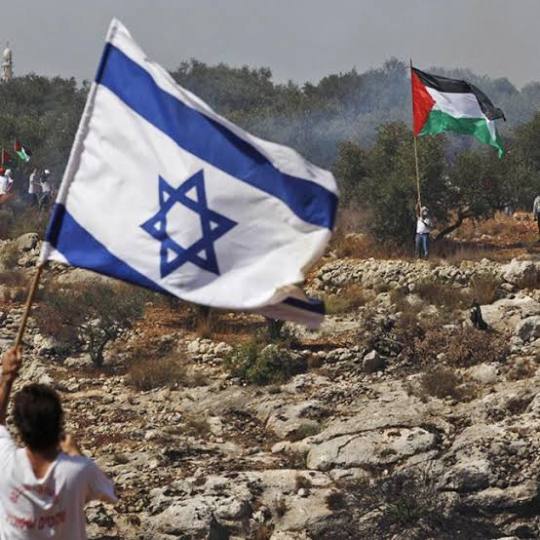
The next one is the "Border" of Israel and Palestine.
The 1949 armistice lines served as Israel’s effective borders until 1967 — which is why they are known as the 1967 lines or Green Line. From 1949 – 1967, Jordan controlled the West Bank, including East Jerusalem, and Egypt controlled the Gaza Strip, but Israel gained control of those areas in the 1967 war. Palestinians and much of the international community consider these areas to be under Israeli military occupation. In 1988, the Palestine Liberation Organization (PLO) began to shift from its demand for 100 percent of the land to a state based on the 1967 lines — 22 percent of historic Palestine. Palestinians view this shift as their ‘historic compromise.’ Today, Palestinians see their 22 percent shrinking, as Israeli settlements expand across the West Bank.
Many Israelis do not consider the 1967 lines as a basis for drawing borders, seeing them as arbitrary armistice lines that separated the Israeli and Arab troops in 1949. Additionally, many Israelis reject the characterization of the West Bank and East Jerusalem as “occupied” by Israel. Others argue that borders based on the 1967 lines are not defensible and ask, why should Israel return territory that it won in defensive wars?
Primarily, the driving considerations for Israel on borders are security and demographic realities on the ground — specifically, Jewish neighborhoods in East Jerusalem, and Israeli settlements in the West Bank, that were built since Israel took control in 1967. In total, there are approximately (630,000+) Israelis who live beyond the 1967 lines–the vast majority in communities adjacent to the 1967 lines.
Often, Israelis do not distinguish between Israeli communities within the 1967 lines and those beyond them that are close by.
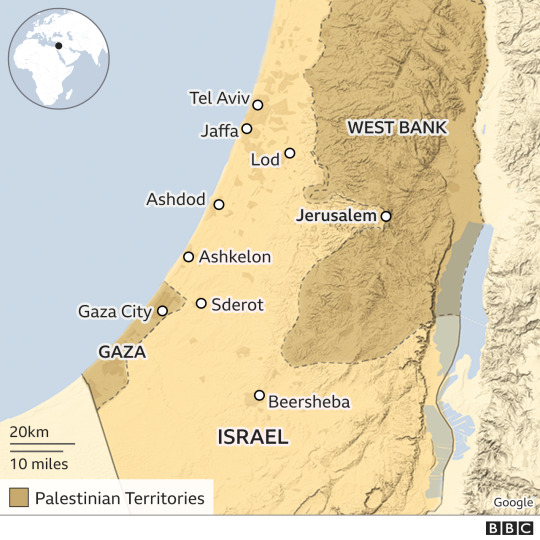
The next issue is all about the "Territory".
Populations in Israel and the Occupied Palestinian Territory endure recurring war crimes and crimes against humanity, including the crime of apartheid.
Palestinian territory encompassing the Gaza Strip and West Bank, including East Jerusalem has been illegally occupied by Israel since 1967. Since then, the Israeli government has established a two-tiered legal and political system that provides comprehensive rights for Jewish Israeli settlers while imposing military rule and control on Palestinians without any basic protections or rights under international law. The Israeli government has also engaged in a regular practice of inhumane acts, as well as extrajudicial killings, torture, denial of fundamental human rights, arbitrary detention and collective punishment. The UN Human Rights Council-mandated Commission of Inquiry (CoI) on the Occupied Palestinian Territory (OPT), including East Jerusalem, and Israel concluded in June 2022 that continued occupation, as well as discrimination against Palestinians, are the key causes of recurrent instability and protraction of conflict in the region.
According to a March 2022 report by the UN Special Rapporteur on the situation of human rights in the OPT, Israel’s political system of entrenched rule in the OPT satisfies the prevailing evidentiary standard for the crime of apartheid. The Special Rapporteur determined in July 2021 that Israel’s occupation since 1967 has been characterized by settlement expansion that aims to permanently alter the ethnic demographics of East Jerusalem and amounts to a war crime. The UN Security Council (UNSC) previously adopted a resolution in December 2016 reaffirming that Israeli settlements in the OPT violate international law. The CoI reached similar conclusions in September 2022, reporting that the Israeli government’s policies and actions have led to the permanent occupation and de facto annexation of Palestinian territory, likely constituting crimes under international law, including war crimes. Both the CoI and Special Rapporteur have reported that this ongoing coercive environment has prevented Palestinians from fulfilling their right to self-determination and other fundamental human rights. In December 2022 the UN General Assembly requested the International Court of Justice to give an advisory opinion on the legal consequences of Israel’s ongoing occupation.
Palestinians are regularly subjected to violence by Israeli settlers, including physical attacks, shooting with live ammunition, torching of fields and livestock, theft and vandalization of property. Israeli security forces also perpetrate widespread attacks against Palestinians, particularly in occupied territory, which often lead to deadly escalations, including regular aerial bombardments of the Gaza Strip. According to the UN Office for the Coordination of Humanitarian Affairs (OCHA) and the Office of the High Commissioner for Human Rights (OHCHR), 2022 was the deadliest year for Palestinians residing in the Occupied West Bank, including East Jerusalem, since 2005, with over 150 Palestinians, including 26 children, killed by Israeli security forces.
Meanwhile, Israel’s air, sea and land blockade of Gaza has been in place since 2007 and has inflicted collective punishment on 2 million Palestinians, facilitating a humanitarian crisis. Israeli authorities periodically shut down the crossings into Gaza, preventing the flow of people, medical cases and essential commodities, including food. Hamas’ security forces have also committed grave abuses against civilians in Gaza, including arbitrary arrests, summary executions and torture.

"Resources"
GENEVA (18 March 2019) – Israel’s exploitation of natural resources in the Occupied Palestinian Territory for its own use is in direct violation of its legal responsibilities as an occupying power, says UN Special Rapporteur Michael Lynk.
For nearly five million Palestinians living under occupation, the degradation of their water supply, the exploitation of their natural resources and the defacing of their environment, are symptomatic of the lack of any meaningful control they have over their daily lives,” Lynk said presenting a report to the Human Rights Council in Geneva.
Israel’s policy of usurping Palestinian natural resources and disregarding the environment has robbed the Palestinians of vital assets, and means they simply cannot enjoy their right to development.
Its approach to the natural resources of the Occupied Palestinian Territory has been to use them as a sovereign country would use its own assets, with vastly discriminatory consequences.”
The report, focusing on the impact of the occupation on the environment and natural resources, said people living under occupation should be able to enjoy the full panoply of human rights enshrined in international law, in order to protect their sovereignty over their natural wealth.
However, Israeli practices in relation to water, extraction of other resources, and environmental protection, raise serious concerns.
With the collapse of natural sources of drinking water in Gaza and the inability of Palestinians to access most of their water sources in the West Bank, water has become a potent symbol of the systematic violation of human rights in the Occupied Palestinian Territory,” the Special Rapporteur said.
As of 2017, more than 96% of Gaza’s coastal aquifer – the main source of water for residents of Gaza – has become unfit for human consumption. The reasons include over-extraction because of Gaza’s extremely dense population, contamination with sewage and seawater, Israel’s 12-year old blockade, and asymmetrical wars which has left Gaza’s infrastructure severely crippled and with a near-constant electricity shortage.
The Rapporteur said natural and mineral wealth from the Dead Sea, which is partly within the occupied West Bank, were being extracted by Israel for its own benefit, while the Palestinians were denied any access to those resources.
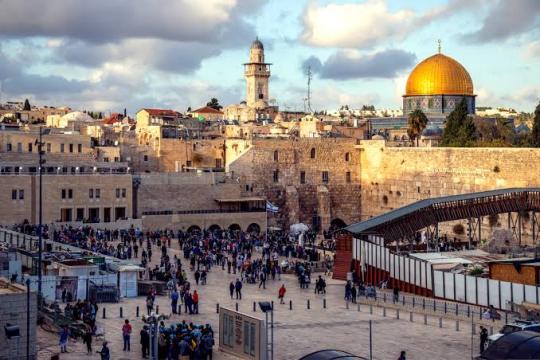
"The Origin Of The People."
The social geography of modern Palestine, especially the area west of the Jordan River, has been greatly affected by the dramatic political changes and wars that have brought this small region to the attention of the world. In the early 21st century, Israeli Jews constituted roughly half of the population west of the Jordan, while Palestinian Arabs—Muslim, Christian, and Druze—and other smaller minorities accounted for the rest. The Jewish population is increasingly composed of persons born in Israel itself, although millions of immigrants have arrived since the founding of the State of Israel in 1948. The Arab population is descended from Arabs who lived in the area during the mandate period and, in most cases, for centuries before that time. The majority of both Jews and Arabs are now urbanized.
According to Jewish nationalists (Zionists), Judaism constitutes a basis for both religious and national (ethnic) identity. Palestinian nationalists usually emphasize that their shared identity as Arabs transcends the religious diversity of their community. Both Muslim Arabs, constituting about 18 percent of the Israeli population, and Christian Arabs, about 2 percent, identify themselves in the first instance as Arabs.
The Arab majority resident in the West Bank and the Gaza Strip and the still larger number of Arab Palestinians living outside the area (many in nearby countries such as Lebanon) have strongly opposed Israeli control and feared an eventual annexation of the West Bank and Gaza by Israel. Many ideological Jewish Israeli settlers support such an annexation and think those lands properly belong to Israel. In 2005 Arab concerns were partially assuaged when Israel completed its withdrawal from the Gaza Strip and handed over control of the territory to the Palestinians, but the Israeli settlement population in the West Bank nearly doubled between 2005 and 2019.
Both Zionists and Palestinian Arab nationalists have at various times since the 19th century claimed rightful possession of the area west of the Jordan River. The rivalry between the two groups and their claims have been major causes of the numerous Arab-Israeli conflicts and the continuing crises in the region. Some members of each group still make such sweeping and mutually exclusive claims to complete control of the area, whereas others are more willing to seek a peaceful compromise solution.

"The Nova Music Festival"
Several hours after the gates opened for the Israeli music festival Supernova, Amit Bar and her boyfriend Nir Jorno arrived with their friend Ziv Hagbi, excited for the event. The devoted electronic music fans had traveled from Matzliah, some 60 miles away. “We really waited for this event,” the 27-year-old Bar says. “It was supposed to be a really good one – really fun, lots of people.”
The gathering promised to be the highlight of the year, especially for those who loved psychedelic trance, or psytrance, the intense and celestial dance music subgenre. “[The music] is based on a philosophy of life,” says veteran British DJ Martin Freeland, who performs as Man With No Name and was scheduled for late Saturday morning. “It’s Woodstock with electronic music. It’s that kind of mentality: a hippie culture, but the music is different. These are the sweetest people. They would never harm anybody.”
Between 3,000 and 4,000 attendees flocked to an open-air space in Israel’s Negev Desert – about three miles from the Gaza border – where 16 DJs from around the world were set to spin in darkness and light for 15 hours straight. The event was timed to the end of Sukkot, a week-long celebratory Jewish holiday commemorating the harvest and the period after Israelites were freed from slavery in Egypt.
Supernova, produced by Israel-based Nova Tribe, also doubled as the Israeli edition of Brazil’s popular Universo Paralello festival, a biannual nine-day event that has hosted electronic, reggae, and hip-hop artists near the country’s southern beaches for 20 years. It was set to take place Oct. 6 and 7, although its producers wouldn’t reveal the exact location to ticketholders — which included many teenagers able to get around the minimum age requirement of 23 — until shortly before it began. All anyone knew was this: “The event will take place in a powerful, natural location full of trees, stunning in its beauty and organized for your convenience, about an hour and a quarter south of Tel Aviv.” Attendees were prohibited from bringing weapons including guns and sharp objects.
https://www.rollingstone.com/music/music-features/hamas-israel-nova-music-festival-massacre-1234854306/amp/
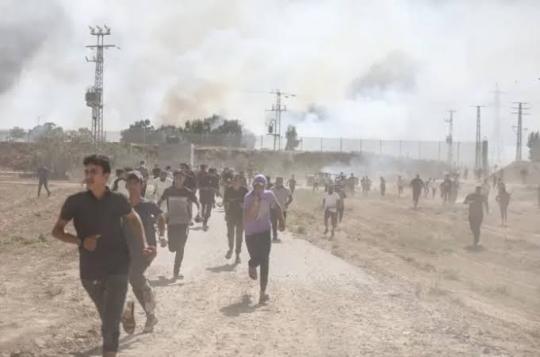
I'm Pro-Israel
because Pro-Israel supporters argue for a variety of reasons. One common perspective is centered around Israel's right to exist as a Jewish homeland, based on historical and religious ties to the region. They often highlight Israel's democratic values, technological advancements, and contributions to various industries such as medicine, technology, and agriculture.
Additionally, proponents of the pro-Israel stance underline the ongoing security concerns faced by Israel due to conflicts and threats in the region. Supporters believe that Israel has the right to defend itself against terrorism and military aggression, as it has faced numerous wars and acts of violence throughout its history.
Furthermore, some pro-Israel advocates argue for the recognition of Israel's commitment to human rights, emphasizing the country's protections for religious freedom, LGBTQ+ rights, and equality for its citizens – which they perceive as unique within the Middle East.
It is important to note that the pro-Israel viewpoint is not universally endorsed, and counterarguments exist. Critics of the pro-Israel stance often highlight the Israeli government's policies towards Palestinians, citing concerns about human rights violations, military occupation, and the ongoing Israeli-Palestinian conflict. They advocate for a fair resolution that addresses the rights and aspirations of both Israelis and Palestinians.
When forming an opinion, it is crucial to examine multiple perspectives, engage in civil discourse, and consider different narratives presented by individuals with various backgrounds and experiences.
3 notes
·
View notes
Text
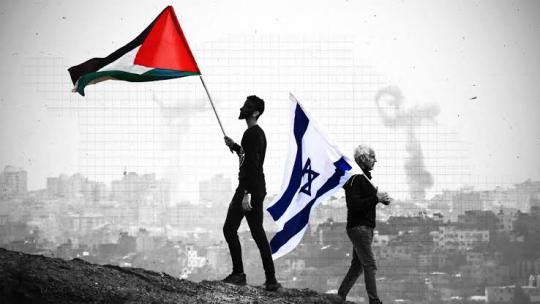
The Israeli-Palestinian Conflict
(https://youtu.be/m19F4IHTVGc?si=dJvn2gTDg1f-lAVP)
- Israel the worlds only jewish state located east of the mediterranean sea and Palestine territory of the arab population that hails from the Israel-controlled land have long been known for their enduring conflict with Israeli occupation of the west bank and the gaza strip. This conflict has been ongoing since 1948. The tension between Israel and Palestine has been deterioating in years climaxing with many violent clashes between the two sides.
This is part of the broader Israeli–Arab conflict. Many attempts have been made to agree to a two-state solution, in which a Palestinian state would be established adjacent to Israel. Currently, most Israelis and Palestinians, according to polls, prefer the two-state solution over other solutions as a way to resolve the conflict.
Judaism, Christianity and Islam
(https://youtu.be/m19F4IHTVGc?si=dJvn2gTDg1f-lAVP)
This monotheism brief focuses on the religious dimension of the conflict, which both historical and recent events suggest lies at its core. That much is almost a truism. What is less often appreciated, however, is how much religion impacts the identity of actors implicated in this conflict, the practical issues at stake, and the relevant policies and attitudes.
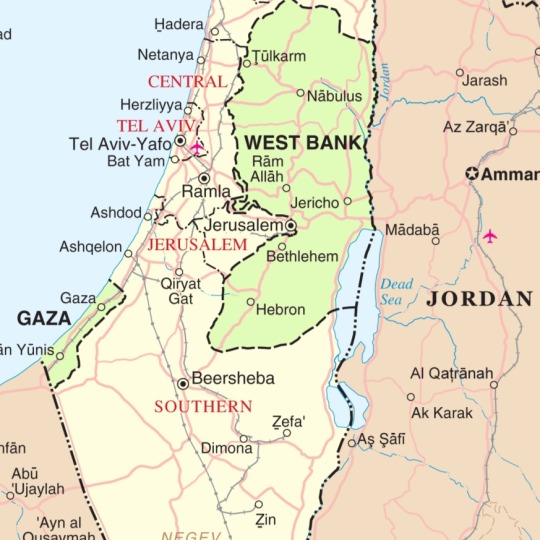
The Green Line
The Green Line is Israel's contested boundary with the Palestinian territories.
The Green Line is a term that emerged in the wake of Israel's establishment in 1948, whose proper name is the 1949 Armistice Line. It refers to the border separating pre-1967 Israel from the Occupied Palestinian Territories, and constitutes an internationally recognised border.
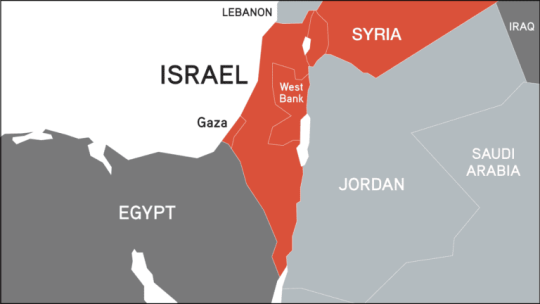
Palestinian territory
(https://www.globalr2p.org/countries/israel-and-the-occupied-palestinian-territory/)
encompassing the Gaza Strip and West Bank including East Jerusalem.
- It has been illegally occupied by Israel since 1967. Since then, the Israeli government has established a two-tiered legal and political system that provides comprehensive rights for Jewish Israeli settlers while imposing military rule and control on Palestinians without any basic protections or rights under international law. The Israeli government has also engaged in a regular practice of inhumane acts, as well as extrajudicial killings, torture, denial of fundamental human rights, arbitrary detention and collective punishment.
Natural Resources and the Arab-Israeli Conflict
(https://pij.org/articles/1567/natural-resources-and-the--arabisraeli-conflict)
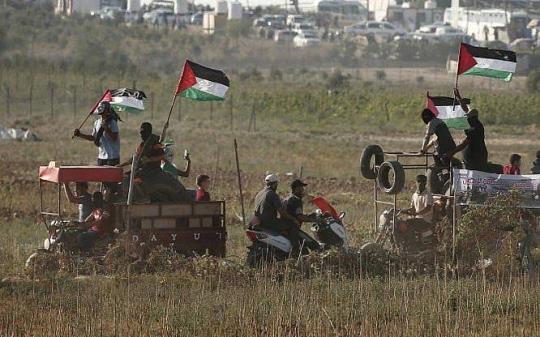
Israel includes timber, potash, copper ore, natural gas, phosphate rock, magnesium bromide, and clays.
Palestine includes fresh and ground water, arable land and, more recently, oil and natural gas.
The conflict in the Middle East has always had natural resources in its background: land, water and oil. Strategists have asserted that the struggle over water might be at the heart of the next round of the Arab-Israeli conflict.
The Israel People Origin
(https://en.m.wikipedia.org/wiki/Israelites)
- According to the religious narrative of the Hebrew Bible, the Israelites' origin is traced back to the biblical patriarchs and matriarchs Abraham and his wife Sarah, through their son Isaac and his wife Rebecca, and their son Jacob.
Nove Music Festival
https://youtu.be/APAhJYIhXv4?si=22bEHqqs4HzVCYUc
Hamas militants opened fire at a festival in Israel. The Palestinian militant group has launched its biggest attack on Israel in years firing rockets and tearing down the border between Israel and Gaza Strip. The supernova dance festival was taking place in Israel three miles from the Gaza border. From the record, hundreds could be seen dancing at dawn having no idea that Hamas fighters paraglided towards them ahead. Gunmen opened fire and chased fleeing revellers across the place, others were taken hostage. Thousands of innocent people were harmed.
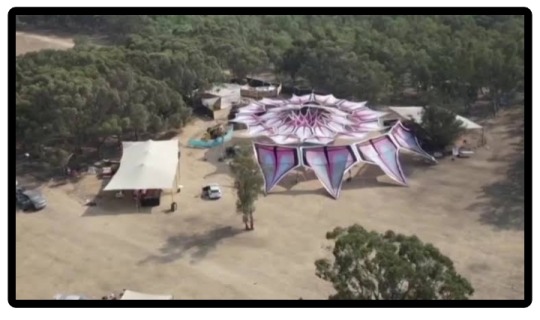
This is the last photo taken from the destruction that the Hamas militants left.
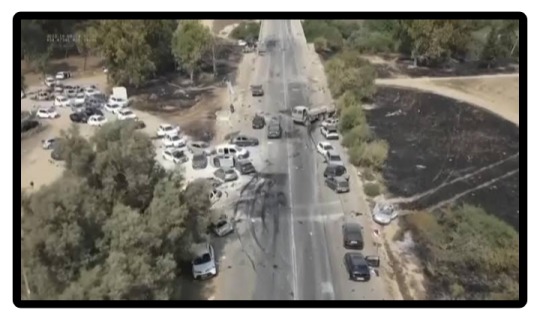
Cars were also left abandoned and damaged by a rocket fire.
Pro Israel or Pro Palestine?
I am a Pro Israel, because i do believe that being pro-Israel means supporting peace and stability for Israeli Jews and Palestinian Arabs, and upholding principles that will ensure that peace and stability over the long term. That means supporting the rights of both Israelis and Palestinians to live in peace and equal rights in Israel-Palestine.
2 notes
·
View notes
Text
ISRAEL VS. PALESTINE
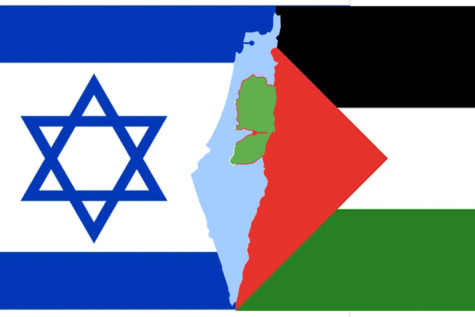
RELIGION
ISRAEL
- The vast majority of Israelis identify as Jewish (74.3%), followed by Muslim (17.8%), Christian (1.9%), Druze (1.6%) and some other religion (4.4%).
- Israel is the only country where the majority of the population identify as Jewish.
PALESTINE
- The majority religion of Palestinians are Muslim, including those living overseas.
- Christianity is the main minority religion of palestine.
BORDER
- According to the Green Line agreed upon in the 1949 Armistice Agreements, Israel is demarcated by Lebanon to the north, the Golan Heights under Syrian sovereignty as well as the rest of Syria to the northeast, the Palestinian West Bank and Jordan to the east, and by the Palestinian Gaza Strip and Egypt to the southwest.
TERRITORY
- The Israeli-Palestinian conflict dates back to the end of the nineteenth century. In 1947, the United Nations adopted Resolution 181, known as the Partition Plan, which sought to divide the British Mandate of Palestine into Arab and Jewish states. On May 14, 1948, the State of Israel was created, sparking the first Arab-Israeli War. The war ended in 1949 with Israel’s victory, but 750,000 Palestinians were displaced, and the territory was divided into 3 parts: the State of Israel, the West Bank (of the Jordan River), and the Gaza Strip.
RESOURCES
PALESTINE
- Historic Palestine has long had an abundance of natural resources, ranging from fresh and ground water, arable land and, more recently, oil and natural gas.
ISRAEL
- Mineral resources,Copper ore is located in the ʿArava, phosphates and small amounts of gypsum in the Negev, and some marble in Galilee.
ORIGIN
- Some will begin with the Romans. Others will start with the late 19th-century Jewish migration to what was then the Ottoman Empire – to escape the pogroms and other persecutions in eastern Europe – and the rise of Zionism. Or the Balfour declaration by the British government in 1917 in support of a “national home for the Jewish people” in Palestine and the ensuing conflicts with Arab communities there.
NOVA MUSIC FESTIVAL
- Thousands of Israelis and foreign nationals had descended on the Negev desert in southern Israel for the music festival, known as Nova, marking the Jewish holiday Sukkot and touted as an event celebrating “unity and love.”
- Palestine attack israel in their music festival/party and Palestine killed almost 200 people, the way of Palestine attack in party is parachuting.
ARE YOU PRO PALESTINE OR PRO ISRAEL
- I stand for israel because they are kind, they also want to help the Palestinians, in the case of the Palestinians, they want to be included in the territory of the Israelis that's why they fight for their territory because the Lord gave it to them so they keep it and no matter how many wars come to them they are the ones who win.
REFERENCE:
https://culturalatlas.sbs.com.au
https://en.m.wikipedia.org
https://www.cfr.org
https://al-shabaka.org
https://www.britannica.com
https://www.theguardian.com
https://edition.cnn.com/interactive/2023/10/middleeast/hamas-music-festival-attack-investigation-cmd-intl
1 note
·
View note
Text
ISRAEL VS PALESTINE
So first let's talk about what is happening between israel vs palestine
Early in October 2023, Israel and Hamas, the militant Islamist organization in charge of Gaza since 2006, went to war. Along with murdering and injuring hundreds of soldiers and civilians, Hamas fighters invaded southern Israeli cities and villages across the Gaza Strip border and fired rockets into Israel. They also took scores of hostages. Israel was caught off guard by the strike, but it soon launched a lethal counterattack. The Israeli cabinet officially declared war on Hamas the day after the attack on October 7, and the Israeli Defense Forces (IDF) were then given orders by the defense minister to impose a "complete siege" on Gaza. Since then, Israel has ordered the evacuation of over a million Palestinian inhabitants, and the two sides have engaged in regular rocket exchanges.
https://www.cfr.org/global-conflict-tracker/conflict/israeli-palestinian-conflict
Religion
ISRAEL
As of 2018, the vast majority of Israelis (74.3%) identify as Jewish, with Muslims (17.8%), Christians (1.9%), Druze (1.6%), and people of other religions (4.4%) following closely behind. Israel is the only nation where the majority of people identify as Jewish. Israel is home to a variety of Christian and Jewish faiths, while the majority of Muslims identify with the Sunni tradition. Israel is home to about 41% of the world's Jewish population. It is rare for members of Israel's major religions to convert; instead, individuals who identify as Jews, Muslims, Christians, or Druze almost always stick with the faith they were raised in.
https://culturalatlas.sbs.com.au/israeli-culture/israeli-culture-religion
PALESTINE
All Palestinians, including those who reside abroad, are Muslims. On an identification card issued by the Israeli government, every resident of the Palestinian Territories must indicate their religion. This document states that 98% of Palestinians identify as Sunni Muslims.1 Christianity is the main minority religion, with an estimated 52,000 Palestinian Christians thought to have resided in the occupied territories as of 2013.2 It is also believed that the number of religiously unaffiliated Palestinians (i.e. atheist or agnostic) in the West Bank and Gaza is very small.
https://culturalatlas.sbs.com.au/palestinian-culture/palestinian-culture-religion
BORDER
ISRAEL / PALESTINE
The Green Line, which technically divides Israel from the West Bank and was also established during the 1949 Rhodes Armistice Talks, which were held between Israel and Jordan, is commonly viewed as the default border between Israel and a future Palestinian state. The border, which was the first official political division of land between the Jordan River and the Mediterranean Sea, was superimposed onto the landscape and reflected the outcome of the war. Some adjustments were also made, particularly in the Wadi Ara region to allow Israel to maintain a territorial link between the coastal towns and Afula.
https://fathomjournal.org/demarcating-the-israeli-palestinian-border/
TERRITORY
ISRAEL
The West Bank, East Jerusalem, and the Gaza Strip are included in the Occupied Territories, which are under the legal control of Israel and the Palestinian Authority (PA), with much of the region being under both parties' purview. Violence between Palestinians and Israeli security forces continued in Israel, Jerusalem, Gaza and the West Bank. The PA Basic Law, which serves as an interim constitution, declares Islam as the official religion but asks for respect of "all other divine religions." In the course of the year, attacks outside the Green Line in Jerusalem, Gaza, and the West Bank claimed the lives of 91 Palestinians and eight Israelis.
https://www.state.gov/reports/2016-report-on-international-religious-freedom/israel-and-the-occupied-territories/israel-and-the-occupied-territories-the-occupied-territories/
PALESTINE
The West Bank, which includes East Jerusalem, and Gaza make up the OPT. In the OPT, there are about 4.5 million Palestinians (2.7 million in the West Bank and 1.8 million in Gaza). In order for a two-state solution to the Israeli-Palestinian conflict to be realized, a sovereign and unified Palestinian state based on the pre-June 1967 lines (the borders that existed before Israel occupied the West Bank and Gaza in June 1967) would be established on this territory, with East Jerusalem serving as its capital.
https://ecfr.eu/special/mapping_palestinian_politics/opt/
RESOURCES
ISRAEL
Potash, bromine, and magnesium are examples of mineral resources; the latter two come from the Dead Sea's waters. Phosphates and trace amounts of gypsum are found in the Negev, copper ore is found in the arava, and minor marble is found in Galilee. Small oil resources have been discovered in the northern Negev and south of Tel Aviv since Israel started limited petroleum exploration in the 1950s. In addition, the nation has natural gas reserves offshore in the Mediterranean and in the northern Negev, northeast of Beersheba.
https://www.britannica.com/place/Israel/Economy
PALESTINE
Natural resources abound throughout historic Palestine, including fresh and ground water, arable land, and wildlife. land and, more recently, natural gas and oil. Seven decades have passed since Israel's founding as a nation. These resources have been misused and corrupted in a number of ways. These include common Land theft by the Palestinians during the ongoing Nakba, water exploitation as a result of failed negotiations, and a When gas or oil is discovered in or under occupied land, finders-keepers law applies.
ORIGIN OF THE PEOPLE
ISRAEL
Abraham founded the idea that there is just one God, the universe's creator, which is where the people of Israel (also known as the "Jewish People") derive from (see Torah). The patriarchs of the Israelites are described as Abraham, his son Yitshak (Isaac), and his great-grandson Jacob (Israel).
https://www.science.co.il/israel-history/#:~:text=The%20people%20of%20Israel%20(also,the%20patriarchs%20of%20the%20Israelites.
PALESTINE
The enormous political changes and battles that brought this tiny territory to the attention of the world have had a significant impact on the social geography of modern Palestine, particularly the region west of the Jordan River. Israeli Jews made up nearly half of the population west of the Jordan at the beginning of the twenty-first century, with Palestinian Arabs (Muslim, Christian, and Druze) and other smaller minorities making up the remainder. Despite the fact that millions of immigrants have come since the State of Israel's inception in 1948, the Jewish population is becoming more and more made up of people who were born in Israel. The majority of the Arab population is descended from Arabs who resided in the region for many centuries before the mandate period and during it.
https://www.britannica.com/place/Palestine
NOVA MUSIC FESTIVAL
One of the initial targets of the historic Hamas ground invasion into Israel was the music festival. It might also be the most lethal. Israel's search and rescue group estimated that there had been at least 260 fatalities.
Additionally, militants carried out raids on neighboring settlements, killing and kidnapping locals—in some cases, entire families—while moving from house to house. More than a full day after the assault started on Sunday afternoon, the Israeli force was still fighting Gaza militants in various locations. Seven hundred people lost their lives in Israel, and more than three hundred more were left critically or badly injured. Israeli airstrikes on Gaza has resulted in about 400 Palestinian deaths.
https://www.newyorker.com/news/dispatch/when-massacre-came-to-a-music-festival-in-israel
ARE YOU A PRO ISRAEL OR PRO PALESTINE?
I'm a pro israel because first of all hamas people are the one who attached first and there are many theories that hamas or other militant people at palestine are kidnapping people specially girls to undergo terrible experience such as rape, abuse and many more.
1 note
·
View note
Text
Amnesty and its Israeli Collaborators
The recent Amnesty International report which accuses Israel of apartheid and crimes against humanity is demonstrably dishonest, tendentious, and so lacking in context to be unworthy of serious consideration. Indeed, it has even been called “a paradigmatic example of anti-semitism [sic].” But this will not prevent its use as a weapon in the ongoing diplomatic and legal war being waged against Israel in the UN. As Anne Herzberg of NGO Monitor wrote,
These groups [Amnesty, Human Rights Watch, B’Tselem]—through their personal connections and singular influence at the U.N. Human Rights Council, and the acquiescence of Europe—instead will simply get U.N. Special Rapporteur Michael Lynk and the Navi Pillay-headed Commission of Inquiry [COI] to uncritically adopt their claims and mark them with the U.N. stamp of approval in the next few months. Unsurprisingly and in keeping with his history of anti-Israel activism (as well as in violation of U.N. rules), although he is ostensibly currently conducting an independent and objective investigation of apartheid, Lynk promoted the group’s report on Twitter. There is no doubt that the COI will act in a similar fashion.
Here are a few of Amnesty’s dozens of recommendations (p. 272ff.): Israel must repeal its nation-state law, “relocate” Jewish residents from areas outside 1949 armistice lines, cancel evictions of Arabs (for nonpayment of rent) and change the law so that “Palestinians” are not subject to “forced eviction,” grant recognition to all “unrecognized villages” in the Negev (i.e., legalize squatting on state land), remove all restrictions on freedom of movement of people and goods into and out of the Gaza strip, punish officials and military personnel for their “violations of international law” and “crimes against humanity,” and – last but not least:
Recognize the right of Palestinian refugees and their descendants to return to homes where they or their families once lived in Israel or the OPT, and to receive restitution and compensation and other effective remedies for the loss of their land and property.
It should be clear from the above that Amnesty’s objective is no less than the end of Israel as a Jewish state, and its replacement by an Arab-majority state. Nevertheless, we can expect in short order UN resolutions calling for sanctions on Israel and attempts to prosecute Israeli officials and IDF officers in accordance with Amnesty’s recommendations.
The accusations contained in the report constitute a große Lüge, a “big lie.” They are “supported,” in a parody of scholarship, by citations from their own previous reports, from anti-Israel UN agencies like the notorious Human Rights Commission, from documents provided by the so-called “State of Palestine,” from interviews with Palestinians, from the work of anti-Israel academics, and of course from numerous NGOs, including those that were recently outlawed in Israel because of their links with the terrorist Popular Front for the Liberation of Palestine.
Amnesty is the largest player in the world-wide “human rights” industry. The organization operates in numerous countries and has an overall budget of close to $US 300 million. It started out in the 1960s with a pro-Western orientation, perhaps receiving funds secretly from the British government and the CIA. At some point it became more critical of the West; in 2011, it called for George Bush to be prosecuted over the treatment of 9/11 detainees. In recent years, it has focused disproportionately on alleged human rights abuses by Israel, perhaps as a result of hiring a number of anti-Israel activists for key positions. Agnes Callamard, Amnesty’s secretary-general since March 2021, recently had to disavow a tweet she made in 2013, idiotically accusing Israel of poisoning Yasser Arafat.
But Amnesty’s biased researchers had significant help on the ground. The Zionist group Im Tirtzu (disclosure: I’m a member and donor) analyzed the Amnesty report and found that 77% of the citations from various NGOs in the report came from 16 Israeli organizations, which are heavily funded by foreign money, mostly from the EU and its constituent governments. They are the usual suspects; B’Tselem, Adalah, Ir Amim, HaMoked, Peace Now, and others. Over the past 10 years, these groups have raked in more than half a billion shekels ($US 171 million) from the European Union and its constituent governments. B’Tselem alone got more than 62 million shekels ($US 19 million).
This is a huge sum and should be a scandal of major proportions. These organizations, despite having almost no support among Israel’s Jewish population, are able to exert great pressure in the legal and political realms. They have petitioned the Supreme Court to dismantle communities built over the Green Line, to prevent the demolition of the homes of convicted terrorists, to prevent the deportation of illegal residents, and so on. They seem to have good access to the Israeli media, as illustrated by the recent B’Tselem and Peace Now campaign to mainstream the idea that there is an outbreak of “settler violence.” But most importantly, they produce a steady flow of accusations against Israel to the international media and to foreign governments.
Whenever there is a military conflict, they swing into action to provide respectability to the propaganda from Israel’s enemies; and they provide the fodder for international condemnations of Israel, as happened in 2009 with the Goldstone Report. Much of the material they supply is simply a repetition of claims made by the PA and Hamas, which achieve credibility through the “halo effect” created by their passing through a supposedly disinterested NGO.
Why does the EU pay to maintain subversive anti-state organizations in Israel? Some of the officials involved may actually believe that they are advancing the cause of human rights. On a few occasions, when the connection to terrorism has been blatant, the EU or a government has suspended funding for a particular group. But they appear to be fine with the idea of supporting the Palestinian cause, the dissolution of the Jewish state, at least when no guns or bombs are directly and immediately involved. I believe that there is a deep feeling in Europe, possibly going back long before there was a Palestinian cause (or even Palestinians), that the world would be better off without Jews or, even more so, their state. Antisemitism has somehow morphed into humanism.
And why does Israel permit her enemies to support a subversive fifth column inside the state? I don’t know. Big money corrupts. Maybe enough Israeli politicians have personal connections to these NGOs, and they or friends and family benefit from them, and that’s why the laws that have been passed to regulate foreign money are weak and toothless. Maybe now, after the damage has been done, the Knesset will take action.
The Amnesty report is just another libel against the Jewish people, like the medieval blood libels and the Protocols of the Elders of Zion. There is little that the State of Israel can do to silence its external enemies. But it does not have to allow them to pay her home-grown quislings to do their dirty work.
Abu Yehuda
#Israel#Diplomatic warfare#Europe and Israel#Israel and Palestinian Arabs#Jew Hatred#Post-Zionism#The UN
10 notes
·
View notes
Note
Probably an stupid question, but when people ask to "End the occupation" it means that Israel gives back the land that was taken from Palestine during the recent war, or it means to dismantle Israel completely?
For sane people with any political and historical awareness at all, it means to end the Israeli military occupation of the lands taken from Egypt (Gaza) and Jordan (West Bank) during the defensive war in 1967, these to create a new state of Palestine next to Israel.
For racist crackpots, it is said at the same time as - and means the same thing as - dismantle Israel entirely, because for them all of Israel since 1948 is occupied territory and should all be Palestine.
It really does not help when BDSers and anti-Zionists constantly conflate and intermingle both ending the post-'67 occupation and politically dissolving Israel ("1SS," "right of return," etc.). If there were a 2-state BDS movement, dedicated to pulling all Israelis back to the 1949 armistice lines, boycotting everything across those lines but leaving Israel alone, it would probably be supported by 80% of diaspora Jews and 40% of Israelis, as opposed to the current annihilationist BDS which is supported by maybe 10% of diaspora Jews and negative-200% of Israelis.
24 notes
·
View notes
Text
The Deal
First, divest yourself from the idea that this plan is just a trick to divert attention from Trump’s impeachment or Bibi’s indictment. The document describing it is 181 pages long. It is not a diversion. I am not interested in the question of whether its release now will help Trump (I suspect it won’t matter) or Bibi (it’s unclear). Also, if you are one of my readers who hates Trump – if I still have any, after proposing that he get the Nobel Peace Prize – please put that aside. This paragraph is the last one in this post that will mention him. I want to focus on the proposal itself.
I will not pretend to have read all 181 pages yet. But the broad outline of the proposal, including maps, is contained in the first 40-odd pages. It is a thoughtful attempt to arrive at a solution, and it takes into account the failure of previous efforts. There is a huge amount of material here, and I could write essays about the presuppositions and the implications of every page, but I will try to limit myself to describing the proposal in general terms and discussing its significance in the long and depressing saga of the “peace process.” In recent years, proposals have centered around the ideas first expressed in the Clinton parameters of 2000-1, which envision most of Judea, Samaria, and Gaza as a Palestinian entity, with swaps to allow the large settlement blocs to continue to exist. The new proposal diverges sharply from these plans.
Summary of the plan
The plan (the official name is “Peace to Prosperity: A Vision to Improve the Lives of the Palestinian and Israeli People”) is a two-state solution which preserves the original intention of UN Security Council Resolution 242, in which Israel withdraws from some of the territory taken in 1967, while keeping secure boundaries. The Palestinian “state” here is more like Rabin’s vision of something “less than a state,” because Palestine will be demilitarized, and its borders and airspace will be controlled by Israel for an unlimited time.
The plan is intended as a statement of concepts, although it is a pretty detailed one. It calls for an Israeli-Palestinian negotiation whose product will be a final “peace agreement” with all the details worked out. During the period of negotiations, Israel will freeze construction or expansion of settlements (for a maximum of four years) in those areas that are defined as Palestinian in the plan.
The agreement would create a “state” of Palestine that encompasses most of today’s Areas A and B and some of Area C. Israel will receive most of Area C, including the Jordan Valley. 97% of Palestinians will find themselves in Palestine and 97% of Israeli residents of Judea and Samaria will be in Israel. The remainder will be in Palestinian enclaves in Israel, or Israeli enclaves in Palestine. Enclaves will be under civil control of their respective governments, but Israel will be responsible for security in both cases. Israel will provide land swaps (attached to Gaza along the border with Egypt) which will give Palestine roughly the same area as the pre-1967 “West Bank” and Gaza. There will be a high-speed rail link (on the map it is shown as a tunnel) between the eastern part of Palestine and Gaza, and special roads across the Jordan Valley to the Allenby Bridge with Jordan. Infrastructure will be built to ensure that Israeli and Palestinian enclaves are not isolated. It’s possible that some Israeli Arab communities in the “Arab Triangle” near Umm al-Fahm might be included in Palestine.
In no case will any Jews or Arabs be required to move from their homes, a principle that diverges significantly from previous plans which included the removal of Jewish settlements.
I’ve included the two “conceptual maps” from the proposal at the end of this post. They show the borders and other features envisioned by the proposal.
Jerusalem will continue to be the capital of Israel, and Israel will continue to provide security for the holy sites of all the religions. The city will not be re-divided along the 1949 armistice line, but the areas east and north of the existing security barrier (“including Kafr Aqab, the eastern part of Shuafat and Abu Dis”) will become the capital of the State of Palestine, and may be renamed “Al Quds” or whatever the Palestinians decide. Arabs living in Jerusalem inside the security barrier will have the option to become citizens of Israel or Palestine, or retain the status of Permanent Resident of Israel (most Jerusalem Arabs chose this status after 1967 rather than becoming citizens).
The “Vision” provides for an economic plan to provide for a viable Palestinian state rather than one that relies on international donors. I won’t discuss this here.
Overall security for both states will be Israel’s responsibility from Day One, “with the aspiration that the Palestinians will be responsible for as much of their internal security as possible, subject to the provisions of this Vision.”
Israel will retain control of airspace and electromagnetic spectrum from the river to the sea. Special arrangements will be made to protect Ben-Gurion airport from nearby Palestinian areas.
The State of Palestine will be expected to take serious measures to prevent terrorism, which should be evaluated in terms “no less stringent” than those applied to Jordan or Egypt.
The Israeli Navy will be able to block the import of “prohibited weapons and weapon-making materials” to Palestine, including of course Gaza. Palestine will be demilitarized, and Israel will have the right to destroy any Palestinian facility used for hostile purposes. There is a list of weapons and systems that the Palestinians are forbidden to procure. Palestine will not be allowed to make agreements with any state or organization that threatens Israel’s security. Any expansion of Palestinian security capabilities will require Israel’s permission. Israel retains the right to “engage in necessary security measures” to maintain demilitarization and fight terrorism, including incursions into Palestinian territory. There will be “early warning stations” manned by Israeli security personnel in Palestine.
Gaza has always been problematic, and with the Hamas takeover in 2007, it became a hostile enclave which has caused several small wars. The plan explicitly calls for the removal of Hamas, saying that Israel will not be required to meet any of its obligations under the agreement unless the Palestinian Authority is in control of Gaza, Hamas and other terrorist factions are disarmed, and Gaza is demilitarized. If Hamas will “play any role” in the government of Palestine, it must first agree to “explicitly recognizing the State of Israel, committing to nonviolence, and accepting previous agreements and obligations between the parties, including the disarming of all terrorist groups.”
The plan calls for Israel to release Palestinian (not Israeli Arab) prisoners held in Israeli jails, except those convicted of murder or conspiracy to commit murder.
There will be no “right of return” to Israel for people with Palestinian refugee status. Those registered as refugees with UNRWA will have the option of absorption into the State of Palestine or their present host countries, or to a limited extent, to other Organization of Islamic Cooperation states that agree to take them. Once the agreement is signed, Palestinian refugee status and UNRWA will cease to exist.
The Palestinian state will not necessarily be created upon the signing of the agreement; the transition from the Palestinian Authority to the State of Palestine will occur only after the Palestinians have created a Western-style democracy and legal and banking systems, and have stopped incitement and education for hatred in its schools and other institutions. Palestinians will be required to “create a culture of peace” which will not glorify terrorism or martyrdom, and will not deny the right of Israel to exist as a Jewish state.
The agreement will include mutual recognition of Israel as the nation state of the Jewish people and Palestine as the nation state of the Palestinian people. It will end all claims between the two, and this will be proposed as Security Council and General Assembly resolutions in the UN.
During the period of negotiations or for a maximum of four years, Israel will commit not to build or expand settlements in those areas of Judea and Samaria that are proposed to become part of Palestine. This “settlement freeze” does not apply to settlements in the Jordan Valley, eastern Jerusalem inside the security barrier, or other areas that are expected to become part of Israel. It does apply to Israeli enclaves in Palestinian areas. This is different from previous “freezes” which were applied to the entire area across the Green Line.
At the same time, Palestinians will agree not to join international organizations without permission from Israel, will end its legal actions (e.g., in the International Criminal Court) against Israel, and end the “pay-to-slay” program.
The US will agree to reopen the PLO mission in Washington and provide various kinds of aid.
What do the Palestinians think?
Of course they vehemently reject it. They couldn’t possibly accept the plan without almost as many caveats are there are items in it. The proposed Palestinian “state” is no more a state than Vatican City. The requirements to end what we consider incitement (and they consider education in the fundamental principles of the Palestinian Movement) will be unacceptable to them. Pay-to-slay is inviolable. The “right of return” has always been sacrosanct. Hamas will never disarm. And Palestinians have never been prepared to admit that Israel belongs to the Jewish people, not one inch of it.
What does the Left think?
Leftist organizations in Israel and the US oppose the agreement because of the small size of the proposed Palestinian state and the limitations on its sovereignty, and – in the case of the American Left – because they hate the president and have to oppose anything he does.
What does the Right think?
Many members of the Israeli Right oppose any Palestinian state, because they believe that the restrictions on sovereignty and militarization ultimately aren’t maintainable, and the result of allowing its creation would be another terror entity on our border. They also disagree in principle with any concession of territory that’s part of the Land of Israel. But some think it’s worth the gamble in order to restart building in at least part of Judea and Samaria, and to obtain sovereignty in the Jordan Valley and other parts of Area C.
What do I think?
The plan can’t possibly be translated into an agreement that the Palestinians would agree with, even as a pretense. It pays lip service to the idea that Palestinians want normal lives in a well-run, economically flourishing state. Certainly there are those that do want this, but the leadership and what Barry Rubin, z”l, used to refer to as “the young men with guns” who determine what happens on the street do not feel this way. In Palestinian politics and culture, nothing overrides the prime objective, which is the removal of the Jewish presence from the land that Palestinians believe belongs to them alone. Anyone who says different may be held accountable by the young men with guns. To accept the plan would be to betray their Palestinian identity and their Islamic religion in return for an attenuated, emasculated “state” that would be dependent on the hated Jews.
Having said that, I think the authors of the plan understand Palestinian political culture, and what they want to do is help the West to stop appeasing it. The proposal breaks the sterile consensus that has developed since Oslo, in which the conflict is seen as entirely Israel’s fault, nothing is expected from the Palestinians, and “solutions” are just different approaches to forcing Israel to make concessions. One example of this is that for the first time since 2000, the proposal rejects the holiness of the 1949 armistice lines, and calls for secure borders instead. In my opinion, the paradigm shift embodied in the proposal is its most important and worthwhile feature.
The objection that a Palestinian state, once created, would not remain benign and demilitarized is definitely a concern, but it will not become relevant for some time. Judging by the conditions placed on the Palestinians before they will be granted whatever bit of sovereignty they will have, it’s hard to imagine that it will actually come into being. Accepting the deal now would allow to Israel to take actions immediately, like building in areas that are expected to be part of Israel, annexing the Jordan Valley, and applying Israeli law to existing Jewish communities.
The significance of the deal, therefore, is not that it will ever be fully implemented. It is that it will change people’s thinking about the conflict, and free Israel from the chains of the Oslo/Clinton paradigm.
Israelis, therefore, should welcome the change in direction and take the opportunities offered, even if they have problems with specific parts of the program.
The PM promised to bring the program to the Cabinet for approval on Sunday, and I will be happy to see this.
Maps
How the proposal views the final configurations of Israel and Palestine:
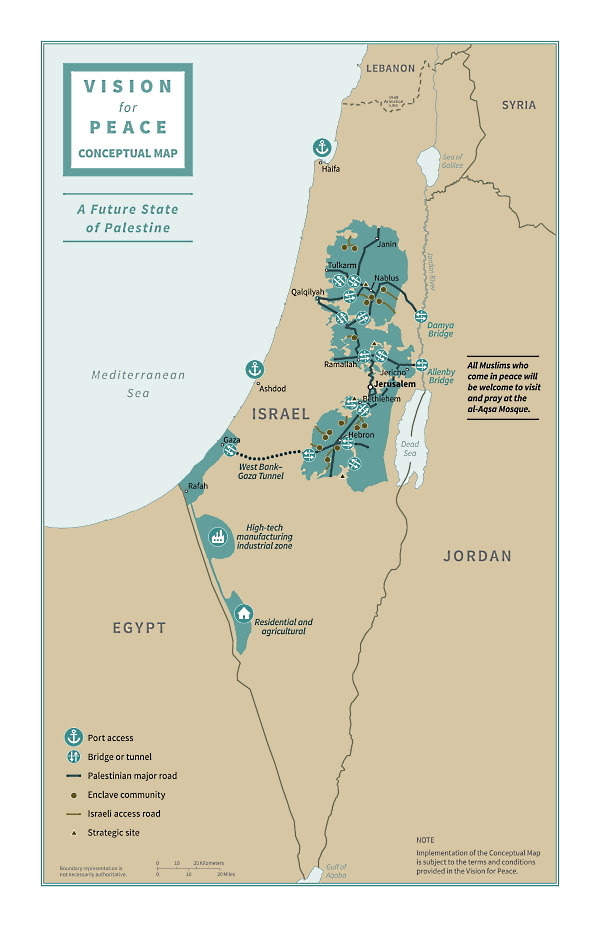
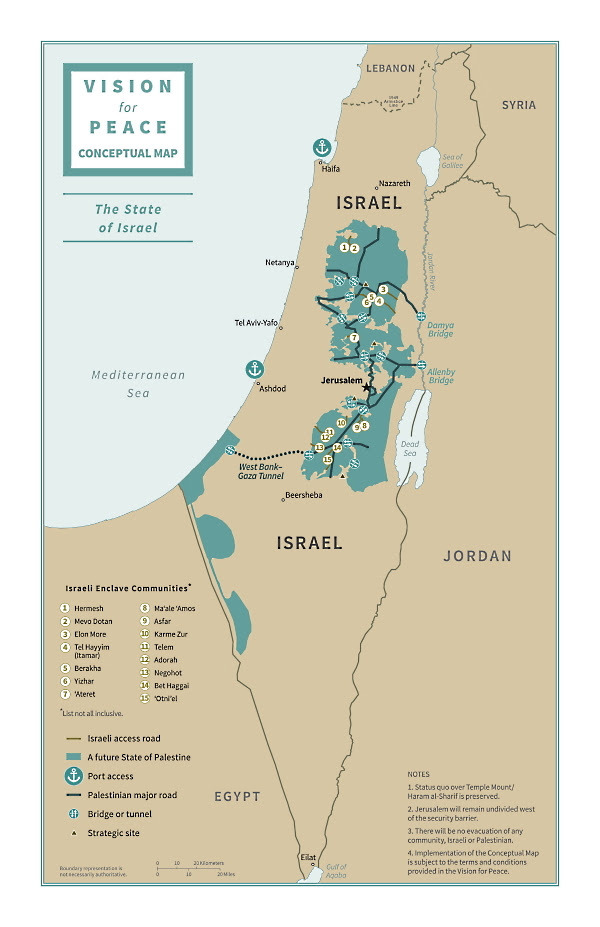
Abu Yehuda
21 notes
·
View notes
Text
uhm aside from the number i said is wrong, which is misinformation, is it just that number? the fact it was made poorly and my initial interpretation of it was the land control which wasnt accurate? then i look at it and find what it might be based on and tried to explain what it might be trying to portray. not really sure how that thing in particular is antisemitic though, unless inflating an israel population number is inherently antisemitic? its obviously wrong to use an incorrect number, esp one 10x higher than it should be.
i was raised zionist (but am not zionist) in the US bible belt and have spent the past 3+ weeks researching as much as i can on everything going on trying to understand all of it. this includes the history of the area, history of the different peoples native there, and all the military activity from all the different powers in the region. the main problem with graphic is the israel number having an extra digit otherwise the population numbers match, the israel number is inclusive of non-jews living in israel.
instead of saying "oh that was sarcasm" why are you not also providing info or analysis of the visual in question? the 1949 armistice happens because of the lapse of british mandate and israel declaring state hood and taking land? do you dispute this? do you dispute the numbers (which i explained one is wrong and why? which thing is it just how it shows the land areas becuase the land areas dont track with borders exactly when i said i dont think they represent that and instead represent the population spreading out not the birder lines or military front line.
nothing has been presented that implies the visual is antisemitic, bad information cus the number wrong sure, can say bad infornation is misinfornation i see that. however instead of actually trying to discuss it you just say its antisemitic misinformation and a link to the 1949 armistice doee not answer that and im sorry for answering what i thought were real questions to get to some understanding of what the graphic was doing or trying to do and explain it based on what i know and have discussion about it.
ive been told my entire life that not supporting israel would send me to hell and it was antisemitic to not blindly support israel. those zionists that raised me are absolute nutcases and want to see the entire middle east burn becauae they are racist and fascist with their draconian law bible to follow.
i should have looked at it more closely before reblogging but even so it does generally (with an inflated israel number cus extra 0) represent the spread of israel population over area and contraction of the palestine population over area. not really sure what explicitly makes the graph antisemitic unless anything that lies or misrepresents israel or its population is inherently antisemitic which doesnt track with definition, israel has over 2m non-jews, israel is the jewish state but it is not a full and true representation of only jewish people.
sorry. im just trying to support palestine because netanyahu and the likud party are evil and is actively subjecting palestinians to genocide and it needs to stop. if this graphics misinformation with the number being wrong is antisemitic then any misinformation or mislabelling of groups that are palestinian are islamophobic are they not? is that the logic to follow for these? genuine question
the visualization is not great and seems to only loosely show population growth over the areas with the israel number having an extra digit - what else am i missing about this graphic? do you wish me to take particular action other than an open discussion about the graphic to get to the truth and lies of it?
disporportionate resolution - i do not understand all the details with this resolution yet but it did not give the right of israel to start a military operation to sieze the land the resolution talks about from what i understand but again im still trying to learn.
one war
two war
three war
four war
ever since israel declared statehood they have brought nothing but death and destruction to the region.
im trying to learn and understand everything going on and would very much appreciate further discussion so i can better understand it all. i currently do not know what i could be misunderstanding, i feel like ive gained a fairly okay understanding but im obviously not infallible and the beliefs i was raised with make it all the more confusing to sort truth from fiction from misinformation.
sorry did this on my phone. i promise i am actively trying to learn and understand
Palestinian-Israeli "conflit" in 30 secondes
3K notes
·
View notes
Text
Popping the Myths of Israeli War of Independence
War of Annihilation
We do not care how the wars sporadically started and stopped from May 15, 1948 onward with them lasting into mid 1949 before attaining armistices. Peace would be coming later with Egypt and even later Jordan, while technically Israel is still in a state of war with the other four Arab invading nations; Saudi Arabia, Iraq, Lebanon and Syria. Don’t worry if you did not realize this, probably a fair number of Israelis are unaware of the fact Israel is still at war. There are likely a set of armistice agreements ending hostilities, but we were unable to find any reference to such between Israel and Iraq or Saudi Arabia. Perhaps we will have to settle with the fact they are not shooting at us currently and be happy with that. But the Arab-Israeli War of 1948-9 was not born in a vacuum, there were a series of initiatives which were rejected outright and even the United Nations sought some settlement which also failed and so much more to talk about and see how we got to where we are today, celebrating our independence which was established the nightfall before the dawn brought on the war. So, where do we begin.
What is difficult to believe, but just the same is true, there was a point in time when the Arab world welcomed the founding of the Jewish State and agreed over borders and everything. The year is 1920, late April to be more accurate, in beautiful San Remo, Italy where the San Remo Conference set up the preliminaries for the Mandate System. Included in this were two Mandates which are of interest to our telling, the French and British Mandates. These were set along with Italian and Spanish holdings (see map below). France was charged to form a Christian State and an Arab State while Britain was charged with establishing a Jewish State and subsequently also an Arab State. France divided their region forming Syria (Arab) and Lebanon (Christian) while Britain divided its region into Jordan (originally Transjordan and Arab) and Israel (originally referred to as Palestine and Jewish). The French attempt to make a Christian state in Lebanon was fragile from the very beginning and is close to becoming ruled by Hezballah who has military control and shares Parliamentary control. Were things to come to a head in Lebanon, the Christians would be hard pressed to mount any resistance to a complete Islamic takeover. The British never actually established a Jewish state and instead simply announced they were pulling out as of mid-May 1948 and washing their hands of whatever developed.

Colonial Structure Post World War I defined by Treaties from initial surrender in 1919 through the San Remo Conference setting up the Mandate System in 1922 plus Sykes-Picot redrawing of much of the Middle East
This is where we start our story, the British are leaving and, on their way out, they are confiscating as many weapons as they can find in Jewish towns and Kibbutzim and for expediency’s sake, they are turning these weapons over to the Arab towns which were preparing to join the war against the Jews. The evening of May 14, 1948, Jewish day begins at sundown, so for Israelis it is the next day while the remainder of the world insists on daybreak or midnight, but it is almost sundown of May 14, 1948, or 6 Iyyar, 5708 on the Hebrew Calendar. So, it is Friday, May 14, 1948 at 4 PM, a full eight hours before the official end of the British Mandate, David Ben Gurion read out Israel’s Declaration of Independence at a moving ceremony at the Tel Aviv Museum (video below). There was no shooting, no artillery, no tanks, just celebratory cheers, singing of songs and general state of joyous exhilaration from the Jewish and even some Arab towns, farms and villages. That was it, the official beginning to the Jewish State followed by recognitions which can be viewed here. The celebrations carried on into the morning, especially in Tel Aviv. The Jews and their Arab friends knew what the morning was likely to bring, so they made the most of the few hours of peace that remained.
youtube
The next morning was to bring an assault with an intent which we have found was best described so succinctly by Azzam Pasha, Secretary-General of the Arab Leagueat that time, who stated, “It will be a war of annihilation. It will be a momentous massacre in history that will be talked about like the massacres of the Mongols or the Crusades.” This was what was intended by the six Arab armies from Saudi Arabia, Syria, Lebanon, Egypt, Iraq and Jordan which were perched on every border just awaiting the command or simply the sun to rise so they could swarm across the lands on their way to the Mediterranean Sea wiping the Jews from the land retaking the region for Allah. Their invasion routes can be seen on the map below. For weeks ahead of the morning of May 15, 1948, the Grand Mufti of Jerusalem Amin al-Husseini implored the Arabs who were living between the Arab forces and the Mediterranean Sea, in Israel in simple terms, to evacuate to behind the Arab lines for their safety. His claim was this would permit the Arab armies to simply slaughter every single person they came upon. There were exceptions, namely those Arab villages and towns which were to assist the Arabs by sabotaging Israeli supply and communication lines and ambushing the Israelis from behind as they faced the Arab armies advance. The Mufti promised that the Arabs could follow the armies to the sea and partake of the riches of the Jews and all the spoils of war. This was awaiting the next morning after the joyous celebratory evening and night of the Jewish People returning to their ancestral homelands after approximately a two-thousand-year absence of Jewish rule over these lands. There was great joy and few worried about the next day, but there were the select people who did exactly that as they were the ones who were to defend this precious return.
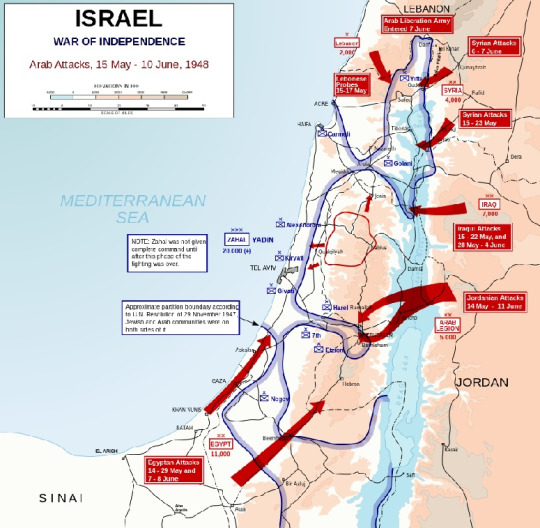
Initial Invasion Routes by Arab Armies on May 15, 1948
This was, very simply put, an Arab initiated war of intended annihilation, not Israel’s War of Independence. Israeli independence came the second David Ben Gurion finished his speech. There was no war necessary. Israel had been declared and that should have been the end of everything except for the celebrations. There was no war, the Jews did not make some amphibious assault on the beaches and push the Arabs out of their nation of Palestine. There was no nation of Palestine and the Jews were already in the land with many having come in the late 1800’s and others who could trace their ancestry back to the times of Kings Saul, David and Solomon. These were the Jews who the Romans had allowed to remain and had resided in these lands for over three-thousand-years. That is an impressive family history to be able to recount, and they can do exactly that. Others returned over the centuries and had resided in these lands for hundred upon hundreds of years. Whenever the British had used the term Palestine or Palestinian, they were referring to Israel and the Jews. The Palestine Post became the Jerusalem Post, the Palestine Philharmonic Orchestra became the Israeli Philharmonic Orchestra and so on with names of banks, hardware stores, plumbing businesses and so much more. The Arabs had their own reference at that time, they were referred to as Arabs or Jordanian, Syrian, Egyptian, Iraqi or whatever nation their family names implied. The first time any Arab became a Palestinian was with the birth of the PLO in 1964. Why did the Arabs decide to take the mantle of Palestinians? That is easy to figure out once you understand the history, they intended to steal the history of the Jews claiming that the Arabs were the ones called Palestinians and the Jews were called, well, they never said what the Jews were called because their intent was always to be rid of them so who cares what names they were called by, anyway, that would just confuse things. Their hope was that nobody would bother with the actual history and they could pull a fast one. Well, what timing, just as the Western World decided not to actually teach history, the Arabs bet that nobody would know history, what timing.
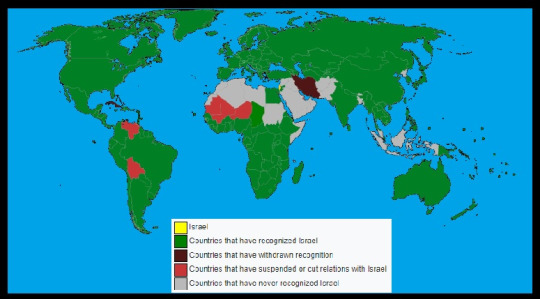
World Recognition of Israel
Well, the celebrations ended rather abruptly around dawn as the first shots fired by the advancing Arab armies starting what would be more appropriately called The Arab War of Intended Annihilation instead of the Israeli War of Independence. Israeli independence had already been established and the war was over whether Israel would continue to exist or be killed at her birthing. The other misleading tale was that Israel won this war and took over additional lands. The only way this would have been true would be if Israel had extended her rule across the Jordan River, over the Golan Heights, into Lebanon and into the Sinai Peninsula. None of these were the result. What happened instead was Israel lost control of lands which included the Golan Heights, the Shomron (Jordan controlled this renaming it the West Bank) and the Gaza Strip which Egypt took control over. These are that troubling thing called facts. When the Arabs show maps showing Israel gaining land, they use the map of the plan offered by the United Nations in the United Nations Partition Plan for Palestine under United Nations General Assembly Resolution 181. This was a nonbinding resolution which suggested a division of the land into Arab and a Jewish states. The Israelis were willing to accept this partition but the Arab League refused the plan planning on the annihilation of the Jews in its stead. When a United Nations General Assembly Resolution is rejected by any of the parties involved, it is forever negated and considered void as if it had never been proposed. So, the Arab League refusal ended any application of the division and the lands reverted to the original borders which was the Jordan River and the border between the Negev Desert and the Sinai Peninsula and the Golan Heights (see maps below). The armistice lines have become the Arab definition of what the Israeli borders should revert to now despite when they were agreed upon the Arab League insisting that these armistice lines were not to ever be interpreted or expected to be actual borders. Their intent was to deny the existence of Israel as it did not have actual borders. Now they demand a return by Israel to those armistice lines so they can have a redo on the Six Day War, another war which was intended to destroy the Jewish State which failed. During the June 1967 Six Day War, Israel liberated the lands lost in 1948-9 as well as gaining the Sinai Peninsula and some claim the Golan Heights.
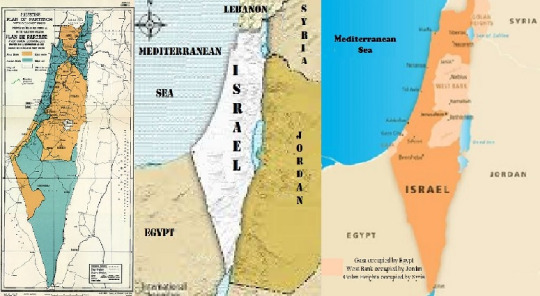
Resolution 181 Division, Israel on the morning of May 15, 1948, Israel after the War and losing lands of Gaza and West Bank
That is why calling the war which began the morning of May 15, 1948, the Israeli War of Independence is actually a misnomer. Israel would have had her independence even had the Arabs not attacked that morning as she had declared her independence the afternoon before. The celebrations had gone on well into the night and even until the Arabs invaded the established nation of Israel. A better name for this war might be the Arab War of Intended Annihilation of Israel or the Failed Arab War to Erase Israel. Now that war is being fought by Arab proxies of the Palestinian Authority and Hamas and Islamic Jihad in Gaza which might be named Hamastan. Over the years, the Arab world acquired great amounts of financial assistance from the Western nations along with the United Nations and for a while the Soviet Union into the coffers of these terror entities all with the hope of peace or an end to Israel. Many of those contributing to these entities desired the latter while all claimed otherwise simply claiming they desired for the Palestinian Arabs to have their homeland back. There never has been an Arab homeland or a nation called Palestine and the main reason that so many Arabs resided in what became Israel was due to the British in cooperation with the Arab League kept moving Arabs into the land to prevent the Jews from being able to declare their homeland. The Palestinian Arab refugee problem is largely, if not entirely, due to the Arabs heeding the Mufti and then when the fighting was over, instead of allowing them to return, something Israel was willing to allow, they placed their brothers and sisters into refugee camps and have kept them there ever since. They basically incarcerated just over six-hundred-thousand fellow Arabs in these camps. Over the ensuing decade, the Arab world expelled over eight-hundred-thousand Jews after denuding them of all assets and anything of worth which Israel took in and remarkably simply incorporated every last one into their society despite much hardship and difficulty. Israel did not incarcerate them permanently in camps to use as a political weapon against the Arab nations which expelled them, Israel accepted their fellow Jews with mixed joy and hardship but in the end, we are all living together mostly in harmony. Give Israel another fifty years and there will be no differentiating who came originally from where and there will be more Israelis like myself with a European father and an Arab national origin mother. In my case it was due to World War II as my British father fought in Burma and when injured he was treated in Bombay (Mumbai) where he met my Iraqi origins mother, and the rest is history. The majority in Israel is simply a case of opposites attract and Jews are intermarrying which will allow us to become completely reinstituted as a single people whose histories and futures are forever to be intertwined.
#beyondthecusp#israel#israeli#warofindependence#1948#jewish#jerusalem#grandmufti#arab#islam#muslim#invasion#anihilation#survival#secular-jew#secularjew#judaism
9 notes
·
View notes